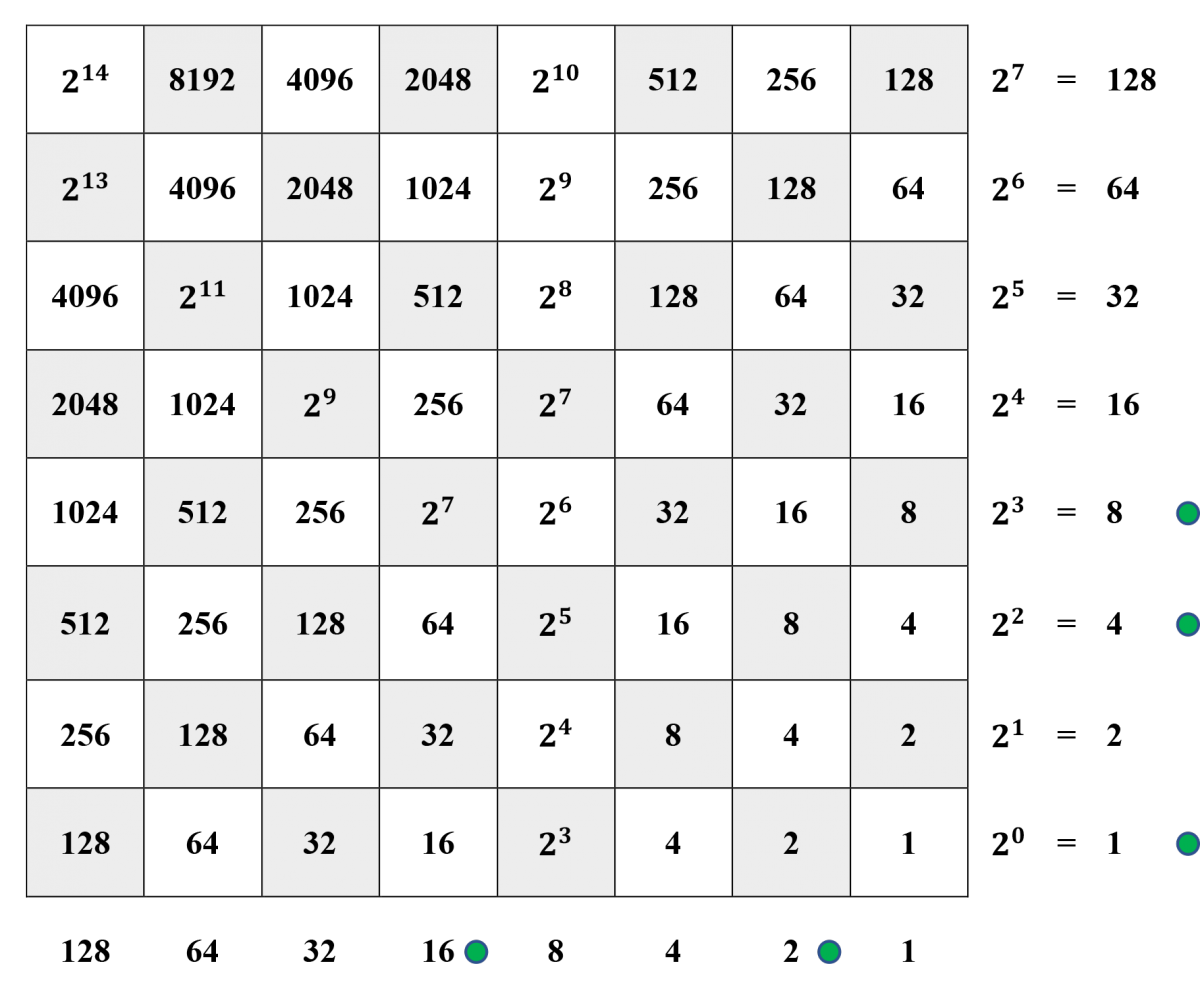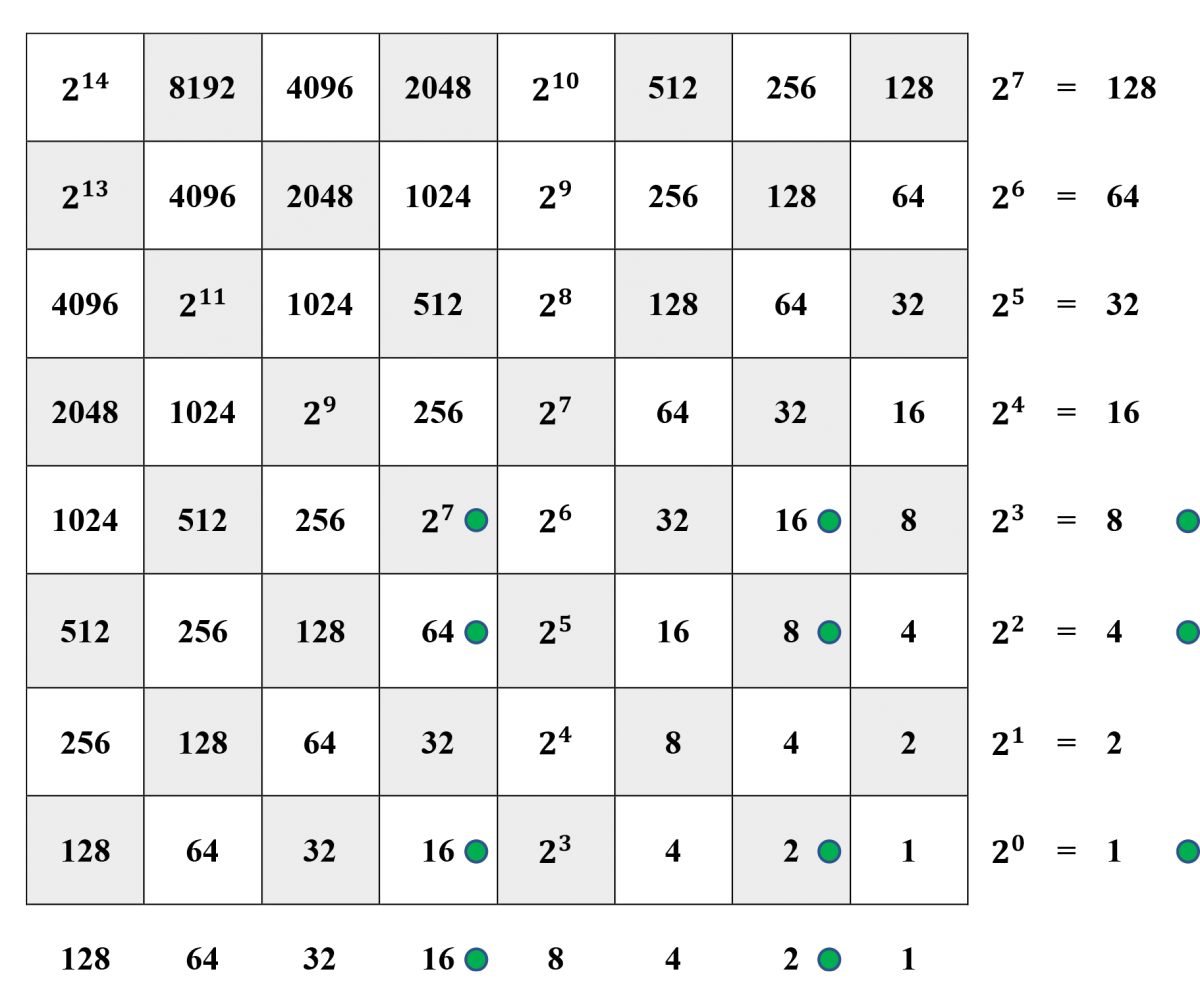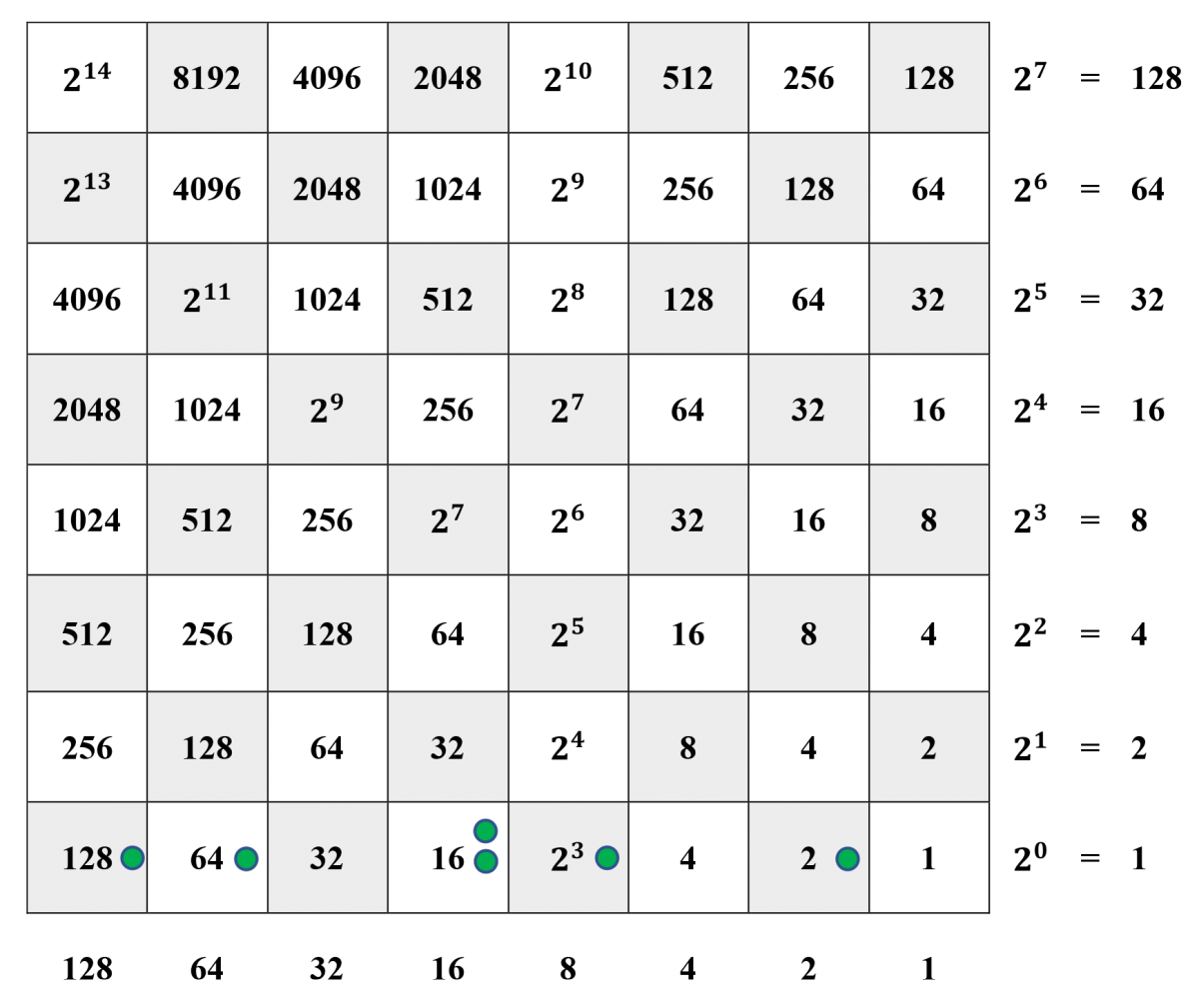- About MAA
- Membership
- MAA Publications
- Periodicals
- Blogs
- MAA Book Series
- MAA Press (an imprint of the AMS)
- MAA Notes
- MAA Reviews
- Mathematical Communication
- Information for Libraries
- Author Resources
- Advertise with MAA
- Meetings
- Competitions
- Programs
- Communities
- MAA Sections
- SIGMAA
- MAA Connect
- Students
- MAA Awards
- Awards Booklets
- Writing Awards
- Teaching Awards
- Service Awards
- Research Awards
- Lecture Awards
- Putnam Competition Individual and Team Winners
- D. E. Shaw Group AMC 8 Awards & Certificates
- Maryam Mirzakhani AMC 10 A Awards & Certificates
- Two Sigma AMC 10 B Awards & Certificates
- Jane Street AMC 12 A Awards & Certificates
- Akamai AMC 12 B Awards & Certificates
- High School Teachers
- News
You are here
John Napier's Binary Chessboard Calculator - Multiplication
How to compute the product of two positive integers:
Step 1. Place counters representing one factor along the bottom (horizontal) margin and counters for the other along the right-hand (vertical) margin.
Step 2. Place a counter in each square on the board representing the intersection of a column for which there is a counter in the bottom (horizontal) margin with a row for which there is a counter in the right-hand (vertical) margin. The square represents the product of those two values.
Step 3. Remove the counters representing the factors from both margins.
Step 4. Slide all counters on the board along their (SW-NE) equivalence lines down to the bottom horizontal row. (This is how a bishop moves in chess.)
Step 5. Abbreviate the bottom horizontal row from right to left, removing every two counters in a square and placing one counter in the square to its left. This process often causes a "chain reaction" that "carries" into squares to the left, requiring further abbreviation.
Step 6. The desired decimal product can now be obtained by converting the abbreviated product back to a decimal number.
Note that products represented on our \(8\times 8\) binary chessboard can be no larger than 255.
Example: That \(18 \cdot 13 = 234\) is illustrated below.

Step 1. The factor \(18=16+2\) is represented along the bottom margin and the factor \(13 = 8 + 4 + 1\) is represented along the right-hand margin.

Step 2. Counters are placed at the intersections of columns and rows for which there are counters both along the bottom margin and along the right-hand margin. For instance, a counter is placed at the intersection of the column labeled 16 at the bottom and the row labeled 4 at the right. The intersection of this column and row is a square labeled 64, and you should check that \(16\cdot 4 = 64.\)

Steps 3 and 4. Counters have been cleared from the bottom (horizontal) and right-hand (vertical) margins. Counters on the board have been slid down their equivalence lines to the bottom horizontal row. For instance, the only counter at a square labeled 64 has been slid along the 64-equivalence line to the 64-square in the bottom row. Likewise, the two counters that were in squares along the 16-equivalence line now both sit in the 16-square in the bottom row.

Steps 5 and 6. The bottom row has been abbreviated from right to left, leaving a row from which we can read \[18\cdot 13 = 128 + 64 + 32 + 8 + 2 = 234.\] The reader may wish to carry out the multiplication \(6\cdot 15,\) an example requiring extensive carries in the abbreviation process.
In preparation for extracting square roots on the chessboard calculator, it is worth noting here that, after obtaining \(18\cdot13=(16+2)(8+4+1)\) in Step 1 above, Step 2 amounts to an application of the distributive law to obtain:
\[(16+2)(8+4+1) = 16\cdot8 + 2\cdot8 + 16\cdot4 + 2\cdot4 + 16\cdot1 + 2\cdot1,\] with the six products on the right-hand side of this equation necessarily arranged in a 3 row by 2 column rectangle on the chessboard. More specifically, removal of one entire row and two entire columns from the second board shown above would result in a 3 row by 2 column rectangle consisting of six contiguous squares with counters in them.
Next: division on the chessboard calculator (followed by extraction of square roots)
Sidney J. Kolpas and Erwin Tomash, "John Napier's Binary Chessboard Calculator - Multiplication," Convergence (December 2018)




